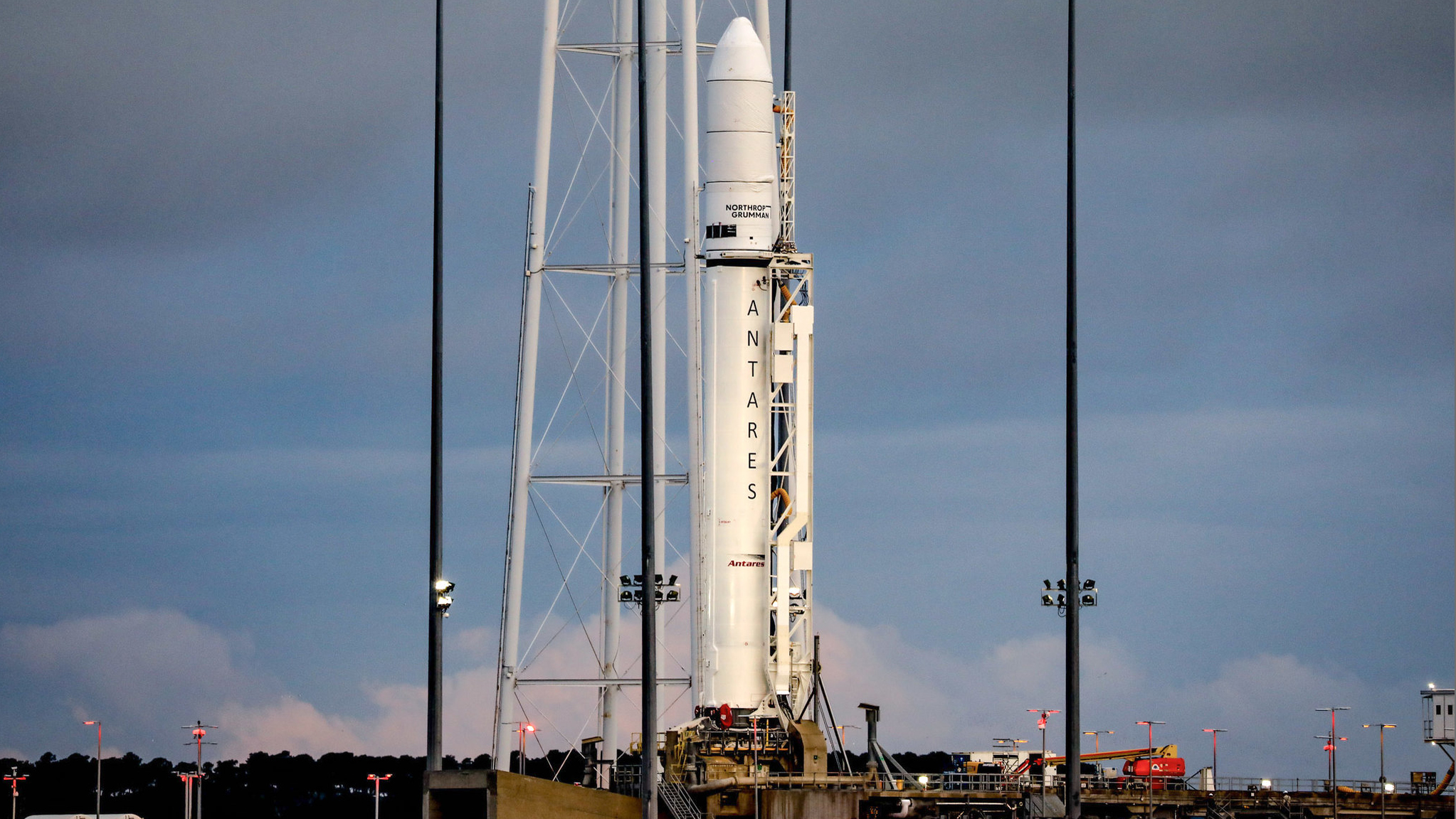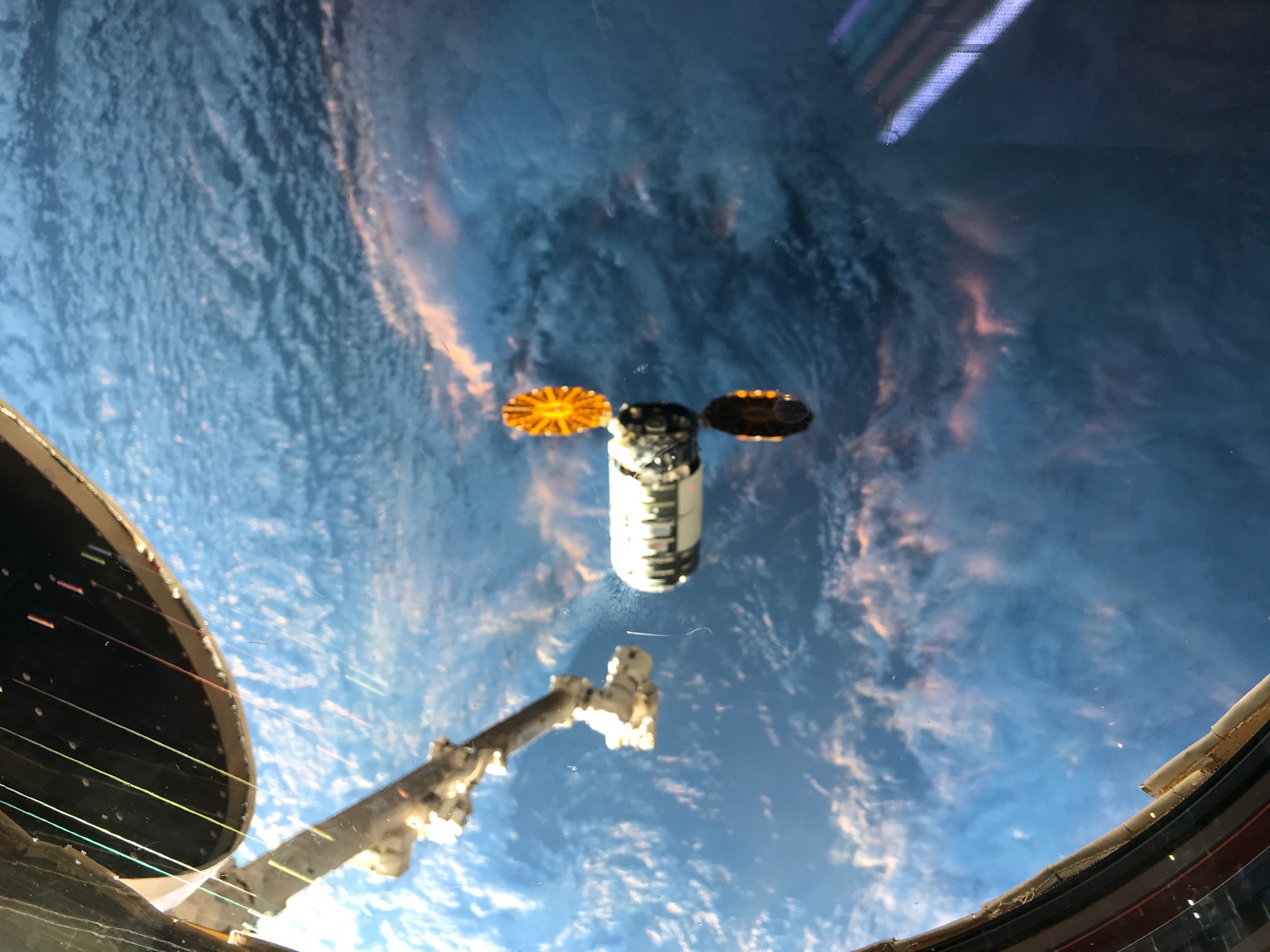Antares rocket ready to launch Cygnus NG-16 cargo ship to space station for NASA
Weather conditions are now 90% "GO" for liftoff tonight at 5:56 p.m. EDT (2156 GMT).

Update for 5 p.m. ET: Liftoff has been delayed by five minutes and is now scheduled for 6:01 p.m. EDT (2201 GMT), as engineers had to "resolve a minor ground support issue," Northrop Grumman tweeted.
WALLOPS ISLAND, Va. — NASA and Northrop Grumman say that everything is looking good for the launch of a Cygnus cargo capsule later today (Aug. 10). The spacecraft is chock-full of research and supplies for the Expedition 65 crew on the International Space Station (ISS).
The flight will blast off from Pad 09A at Wallops Flight Facility in Virginia during a planned five-minute window that opens at 5:56 p.m. EDT (2156 GMT). Weather officials say that tonight's forecast shows conditions are now 90% "GO" for launch, with the only concern being potential cumulus clouds, according to NASA.
You can watch the launch live here on Space.com, courtesy of NASA TV, beginning at 5:30 p.m. EDT (2130 GMT). You can also watch it directly from NASA TV here.
Related: Blobs in space and other cool science launching to the space station
A two-stage Antares rocket, standing 139 feet (42.5 meters) tall, will haul the Cygnus spacecraft into orbit, kicking off a two-day voyage to the ISS. Once it arrives at the space station, Cygnus will berth to the orbital outpost with the help of the station's Canadarm2 robotic arm.
NASA astronaut and Expedition 65 crewmember, Megan McArthur, will use Canadarm2 to grapple the Cygnus, with an assist from her fellow crewmember Thomas Pesquet of the European Space Agency. They are scheduled to capture the incoming freighter on Thursday (Aug. 12) at 6:10 a.m. EDT (1010 GMT). Mission Control in Houston will then oversee the spacecraft's installation on the station's Unity module Earth-facing port.
Get the Space.com Newsletter
Breaking space news, the latest updates on rocket launches, skywatching events and more!
Cygnus will remain attached to the station for approximately three months before it will conduct a destructive reentry into the Earth's atmosphere.

Both the Cygnus spacecraft and the Antares rocket were built by Northrop Grumman, which is one of two companies that are currently delivering cargo to the ISS for NASA (SpaceX is the other). The duo rolled out to the launch pad on Aug. 5 ahead of Tuesday's planned launch.
The mission, designated NG-16, is the 15th operational resupply launch for the space station by Northrop Grumman (and its predecessors, Orbital Sciences and Orbital ATK) as part of its commercial resupply services contract with NASA.
With this flight, Northrop Grumman is continuing its tradition of naming the Cygnus spacecraft after an individual who made key contributions to human spaceflight. In this case, the silvery spacecraft is named the S.S. Ellison Onizuka after the first Asian American astronaut, who lost his life on board the space shuttle Challenger in 1986.
Cargo ships carry essential supplies and food for the astronauts on the space station, but also loads of research investigations. On this mission, Cygnus will deliver approximately 8,200 lbs. (3,700 kilograms) of science experiments, supplies, and hardware for the space station's Expedition 65 crew.
Tucked inside the cargo vehicle will be a number of research investigations, including a study that will look at whether or not engineered muscle tissue is a good testbed for drug therapies, a new carbon dioxide scrubber for the station, as well as hardware for more solar panels.
Cygnus also has a secondary payload on board that will help engineers design better tracking systems for future spacecraft. The prototype infrared payload (or PIRPL) will run for about three months, collecting infrared data to develop algorithms that future sensors will use to identify hypersonic missiles in low orbits.
"It will also be used to study environmental impacts from catastrophic events such as forest fires and volcanic eruptions," Frank DeMauro, vice president and general manager of Northrop Grumman's Tactical Space Systems division said during a news conference Monday (Aug. 9).
Typically cargo vessels remain attached to the station for a few months, to allow the crew time to refill them either with cargo to ship back to Earth or, as is the case with Cygnus, with trash to burn up when the spacecraft re-enters the atmosphere. The spacecraft poses no threat to Earth.
Editor's note: This article was updated at 1 p.m. EDT (1700 GMT) with updated weather forecast information. Previously the weather forecast was 80% favorable for launch; it has since increased to 90%.
Follow Amy Thompson on Twitter @astrogingersnap. Follow us on Twitter @Spacedotcom or Facebook.
Join our Space Forums to keep talking space on the latest missions, night sky and more! And if you have a news tip, correction or comment, let us know at: community@space.com.

Amy Thompson is a Florida-based space and science journalist, who joined Space.com as a contributing writer in 2015. She's passionate about all things space and is a huge science and science-fiction geek. Star Wars is her favorite fandom, with that sassy little droid, R2D2 being her favorite. She studied science at the University of Florida, earning a degree in microbiology. Her work has also been published in Newsweek, VICE, Smithsonian, and many more. Now she chases rockets, writing about launches, commercial space, space station science, and everything in between.










